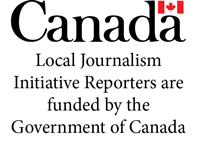Re: Look at alternatives for nuclear waste (Oct. 20)
To the editor,
I am writing in response to a recent letter to the editor that was published under the headline Look at alternatives for nuclear waste. I have great respect for transparent dialogue and understand there can be different points of view around this large-scale environmental infrastructure project. However, the letter contained a number of errors, and it’s important that discussions this important are grounded in facts.
The NWMO (Nuclear Waste Management Organization) has been tasked with the long-term management of Canada’s used nuclear fuel. For more than a decade, we’ve worked to raise awareness and build understanding around the need for a deep geological repository to isolate Canada’s used nuclear fuel. We expect to select a site in either South Bruce or the Ignace area by the end of 2023.
In South Bruce, we have about 1,500 acres of land that we worked together with landowners to purchase or option and are gathering baseline data to better understand the environment of the potential repository. There are more than 40 studies underway with results coming out over the next two years so that by 2023 these studies will help us confirm if the site can safely host a repository, and help communities understand the impact of hosting it so they can make an informed decision.
The host communities for the selected site must be informed about the project and demonstrate they are willing to host it. The project will only be built if it is demonstrated to be safe and through support and partnership with local communities.
Once a site is selected, the project will be subject to a thorough regulatory review process where every detail of the project will come under scrutiny. It is estimated about 5.5 million bundles of spent fuel will be stored in the repository and if this is in South Bruce it will be about 600 metres underground in an environment that has remained basically unchanged for hundreds of millions of years. The repository is a globally recognized geological solution to isolate high level nuclear waste from people and the environment indefinitely.
To be clear: we are using a deep geological repository precisely because it isolates the used nuclear fuel from our precious lakes, rivers and streams.
There is a long history of agriculture operating safely near or next to nuclear facilities, including the world’s largest nuclear generating station right here in Bruce County. The NWMO is engaged with the local agricultural community to find ways to partner, and to leverage science and local knowledge for long-term betterment of the industry. We aim to have an important and positive impact on farming in the area, building on local heritage and bolstering an already vibrant and innovative work being done.
The letter also mentioned molten salt reactors as a potential way to reprocess spent fuel. Studies from around the world have concluded that high-level waste from reprocessing should also be contained and isolated in a deep geological repository. If some of Canada’s used nuclear fuel is identified for reprocessing, it could be diverted for that purpose and the NWMO would stand by to manage the high-level waste that results.
Canada’s used nuclear fuel needs a deep geological repository.
Tareq Al-Zabet
NWMO Site Director, South Bruce



